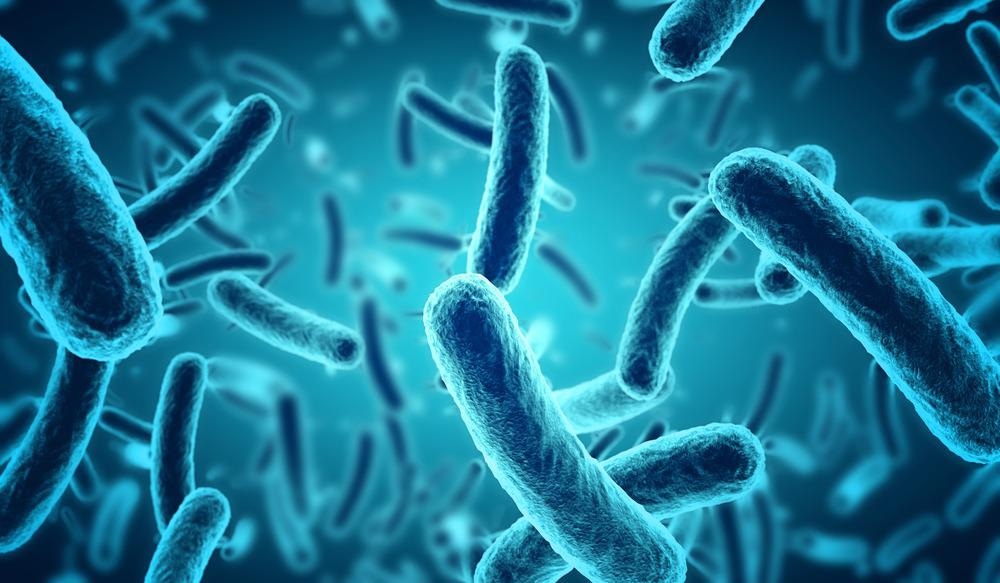In a recent study published in the journal Construction and Building Materials, researchers investigated the self-healing efficiency of alkali-activated materials (AAMs) containing encapsulated healing bacteria (i.e. S. pasteurii) in porous expanded glass granules obtained from recycling of glass wastes.

Study: Crack self-healing in alkali-activated slag composites incorporating immobilized bacteria. Image Credit: paulista/Shutterstock.com
Among two different calcium sources, namely calcium lactate and calcium chloride, calcium lactate was found to be the best AAM raw material due to its cost-effectiveness and no detrimental corrosion effect on steel rebars. Moreover, the large precipitation of calcium carbonate as the dominant self-healing compound resulted in a rapid crack filling and a decrease in water absorptivity.
Background
Ordinary portland cement (OPC) is the most commonly used concrete raw material whose production contributes to 12% of total global carbon dioxide (CO2) emissions, as reported in 2020. Such high CO2 emissions are associated with the thermal decomposition of its main component i.e., limestones.
Meanwhile, alkali-activated slag composites offer a promising alternative to OPC, which are inorganic polymers obtained via geopolymerization of siliceous-aluminous resources of mining wastes and specific industrial by-products. As they are clinker-free and are activated with aqueous alkaline activators, they have a very low CO2 footprint compared to OPC. The major sources of siliceous-aluminous materials are steel slag, fly ash, red mud, rice husk ash, volcanic pumice, and metakaolin.
Furthermore, properly cured AAMs exhibit higher compressive strength, temperature resistance, acid resistance, and impact resistance compared to OPC-based materials. However, their inherent brittleness leads to frequent microcracking, which raises concerns about the safety, serviceability, and durability of AAM structures. Repairing these microcracks is time-consuming, unreliable, hazardous, and in most cases undetectable and inaccessible as they form deep inside the structures.
Self-healing structures are a newly emerging approach to tackle such issues. Such structures incorporate swelling additives, super absorbent polymers, crystalline admixtures, shape memory alloys, and encapsulated microbes that precipitate calcium carbonate through ionic interaction in their cell walls. Nevertheless, AAMs need more studies on their specific self-healing methods.
About the Study
In this study, researchers used the alkaliphilic and spore-forming bacteria S. pasteurii as the self-healing agent for microcracks generated in AAM-based structures. The bacteria cells were initially preserved in glycerol at -75 ℃. Later, they were cultured in agar Petri dishes containing deionized water, yeast extract, ammonium sulfate (NH4)2SO4, and alkaline tris buffer (pH 9.0).
Furthermore, ground granulated blast furnace slag (GGBFS) was used as the solid precursor; meanwhile, sodium silicate solution (Na2O(SiO2)) and sodium hydroxide pellets were used as activators. Porous and expanded glass (EG) obtained from recycled glass waste was used as the reservoirs for the bacteria, its nutrients, and two types of calcium sources namely, calcium chloride and calcium lactate.
More from AZoM: What Materials are Used to Make Solar Panels?
EG protected the bacterial from harsh alkali-activated slag (AAS) environment for improved durability. Additionally, river sand, polyvinyl alcohol (PVA) fibers, and polycarboxylate-based superplasticizers were used as aggregate, crack controller, and workability enhancer, respectively.
Finally, a vacuum impregnation system was used to impregnate bacterial solution and calcium-based solution into the EG. In the first sample (CL-EG), calcium lactate solution was used as the calcium source, whereas in the second sample (CC-EG), calcium chloride and urea solutions were impregnated into the EG.
Observations
From visual inspection, it was confirmed that the abiotic sample (i.e., not containing bacterial solution) had no noticeable change in crack width, whereas both bacterial solution containing samples, i.e. CC-EG and CL-EG, were packed with massive crystals and exhibited enhanced crack-self-healing. Bacterial samples completely healed cracks under 100 μm after 5 months of curing. CC-EG samples healed a maximum crack size of 141 μm, while CL-EG samples healed a maximum crack size of 134 μm.
Moreover, the nutrients and carbohydrates present in the bacterial solution retarded the geopolymerization of the slag paste. Similarly, calcium lactate and calcium chloride acted as retarders to increase the dormant period. The calorimetric analysis showed the presence of a second exothermic peak associated with the polymerization of activated slag gels.
The capillary water absorption test showed that the bacteria caused a significant decrease in water absorption due to the blocking of the capillary pores. The water absorptivity coefficient of the CL-EG sample was slightly smaller than that of CC-EG samples. Additionally, CC-EG samples had calcium carbonate precipitation with a relatively larger crystal size, whereas CL-EG samples had a denser and compact crystal structure.
Conclusions
In summary, the researchers of this study used S. pasteurii as the self-healing agent for microcracks generated in AAM-based structures. They prepared two types of bacterial samples containing different calcium sources viz. calcium lactate and calcium chloride/urea. EG was used as a protective reservoir for the bacteria and its nutrients.
The bacterial samples, CC-EG and CL-EG, demonstrated enhanced self-healing behavior than the abiotic samples. Although CC-EG samples exhibited slightly better self-healing properties than CL-EG samples, from a sustainability and cost-effectiveness point of view, CL-EG is a much better choice as the self-healing agent for AAM structures.
Disclaimer: The views expressed here are those of the author expressed in their private capacity and do not necessarily represent the views of AZoM.com Limited T/A AZoNetwork the owner and operator of this website. This disclaimer forms part of the Terms and conditions of use of this website.
Source:
Zhang, L., Suleiman, A., Allaf, M., Marani, A., Tuyan, M., Nehdi, M., Crack self-healing in alkali-activated slag composites incorporating immobilized bacteria, Construction and Building Materials, 326 (2022) 126842. https://www.sciencedirect.com/science/article/pii/S0950061822005281